
Coronavirus: What providers, patients should know
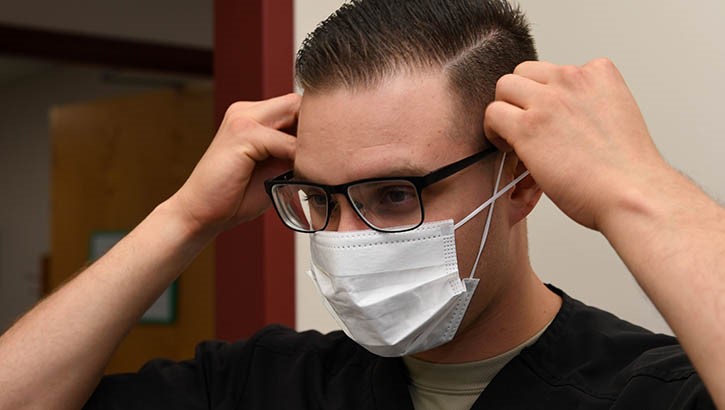
A dental assistant with the 319th Medical Group, demonstrates proper sanitary procedure by putting on a face mask at the medical treatment facility on Grand Forks Air Force Base, N.D. (U.S. Photo by Airman 1st Class Elora J. Martinez)
With news of the contagious and potentially deadly illness known as novel coronavirus grabbing headlines worldwide, military health officials say that an informed, common sense approach minimizes the chances of getting sick.
Many forms of coronavirus exist among both humans and animals, but this new strain’s lethality has triggered considerable alarm. Believed to have originated at an animal market in Wuhan City, China, novel coronavirus has sickened hundreds and killed at least 4. It has since spread to other parts of Asia. The first case of novel coronavirus in the U.S. was reported January 22 in Washington State.
Anyone contracting a respiratory illness shouldn’t assume it’s novel coronavirus; it is far more likely to be a more common malady. “For example, right now in the U.S., influenza, with 35 million cases last season, is far more commonplace than novel coronavirus, said U.S. Public Health Service Commissioned Corps Dr. (Lt. Cmdr.) David Shih, a preventive medicine physician and epidemiologist with the Clinical Support Division, Defense Health Agency. He added that those experiencing symptoms of respiratory illness – like coughing, sneezing, shortness of breath, and fever – should avoid contact with others and making them sick, Shih said.
“Don’t think you’re being super dedicated by showing up to work when ill,” Shih said. “Likewise, if you’re a duty supervisor, please don’t compel your workers to show up when they’re sick. In the short run, you might get a bit of a productivity boost. In the long run, that person could transmit a respiratory illness to co-workers, and pretty soon you lose way more productivity because your entire office is sick.”
Shih understands that service members stationed in areas of strategic importance and elevated states of readiness are not necessarily in the position to call in sick. In such instances, sick personnel still can take steps to practice effective cough hygiene and use whatever hygienic services they can find to avert hindering readiness by making their battle buddies sick. Frequent thorough handwashing, for instance, is a cornerstone of respiratory disease prevention.
“You may not have plumbing for washing hands, but hand sanitizer can become your best friend and keep you healthy,” Shih said.
Regarding novel coronavirus, Shih recommends following Centers for Disease Control and Prevention travel notices. First, avoid all non-essential travel to Wuhan, China, the outbreak’s epicenter. Second, patients who traveled to China in the past 14 days with fever, cough, or difficulty breathing, should seek medical care right away (calling the doctor’s office or emergency room in advance to report travel and symptoms) and otherwise avoid 1) contact with others and 2) travel while sick.
CDC also has guidance for health care professionals, who should evaluate patients with fever and respiratory illness by taking a careful travel history to identify patients under investigation (PUIs), who include those with 1) fever, 2) lower respiratory illness symptoms, and 3) travel history to Wuhan, China, within 14 days prior to symptom onset. PUIs should wear a surgical mask as soon as they are identified and be evaluated in a private room with the door closed, ideally an airborne infection isolation room if available. Workers caring for PUIs should wear gloves, gowns, masks, eye protection, and respiratory protection. Perhaps most importantly, care providers who believe they may be treating a novel coronavirus patient should immediately notify infection control and public health authorities (the installation preventive medicine or public health department at military treatment facilities).
Because novel coronavirus is new (as its name suggests), there is as yet no immunization nor specific treatment. Care providers are instead treating the symptoms – acetaminophen to reduce fever, lozenges and other treatments to soothe sore throats, and, for severe cases, ventilators to help patients breathe.
“Lacking specific treatment,” Shih said, “we must be extra vigilant about basic prevention measures: frequent handwashing, effective cough and sneeze hygiene, avoiding sick individuals, and self-isolating when sick.”
DTRA contributes to historic Ebola vaccine effort
Article
1/17/2020

U.S. Food and Drug Administration approves new Ebola vaccine
MSMR Vol. 27 No. 1 - January 2020
Report
1/1/2020
A monthly publication of the Armed Forces Health Surveillance Branch. This issue of the peer-reviewed journal contains the following articles: Carbon Monoxide Poisoning, Active and Reserve Component Service Members and Non-Service Member Beneficiaries of the Military Health System, U.S. Armed Forces, July 2009–June 2019; Respiratory Pathogen Surveillance Trends and Influenza Vaccine Effectiveness Estimates for the 2018–2019 Season Among Department of Defense Beneficiaries; Brief Report: The Early Impact of the MHS GENESIS Electronic Health Record System on the Capture of Healthcare Data for the Defense Medical Surveillance System; and Brief Report: Incidence and Prevalence of Idiopathic Corneal Ectasias, Active Component, 2001–2018.
Air Force International Health Specialist builds medical capability in Iraq
Article
12/30/2019
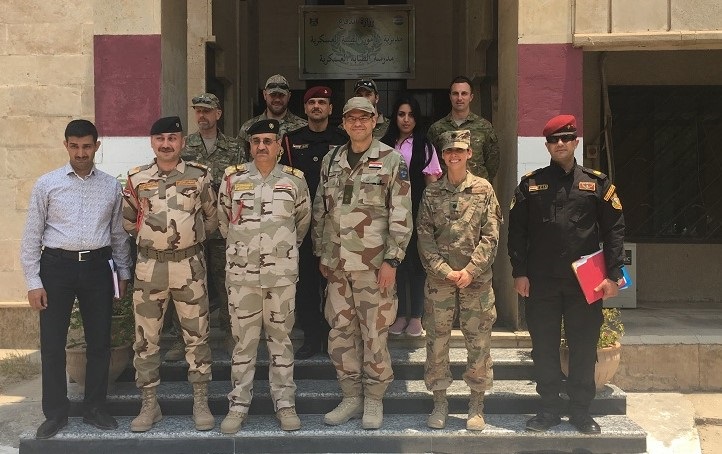
Cowden’s work facilitated the exchange of medical knowledge and practices between Kurdish and Iraqi security forces.
Global Health Engagement strengthens partnerships
Article
12/20/2019
.ashx?h=68&la=en&mw=120&w=120&hash=EFEB174C823214FB196EAB6A1BDA54165C083899FA1B8379BCC5E324DA381782)
GHE advances U.S. national security interests around the world
Network of researchers advancing warfighter readiness
Article
12/4/2019
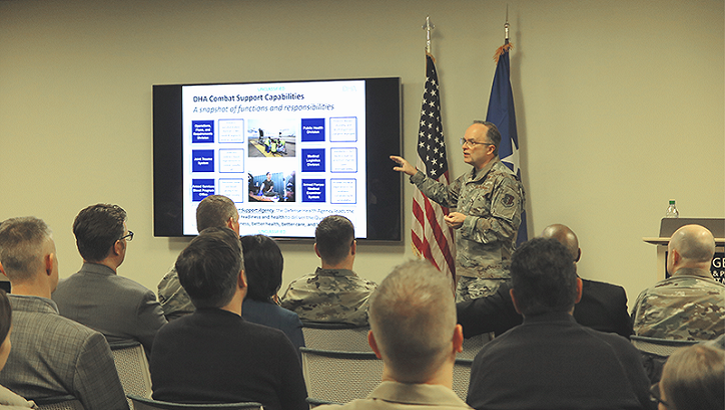
In fiscal year 2020, GEIS awarded approximately $60 million to more than 20 DoD laboratories and U.S. government partners
Ship-based Global Health Engagement
Article
12/4/2019
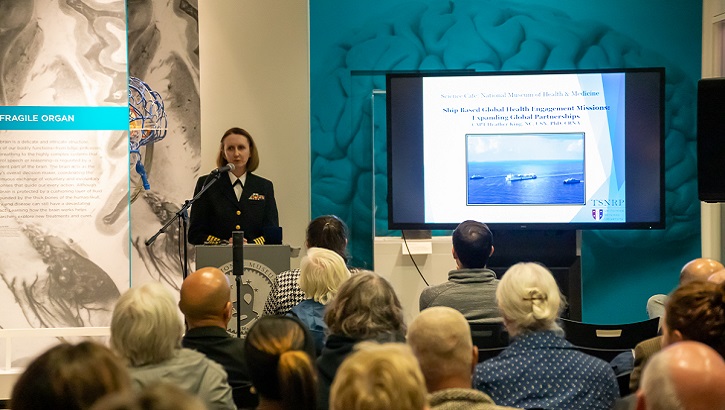
Global health engagement is an important priority for military medicine
World AIDS Day puts spotlight on landmark DoD study
Article
12/2/2019
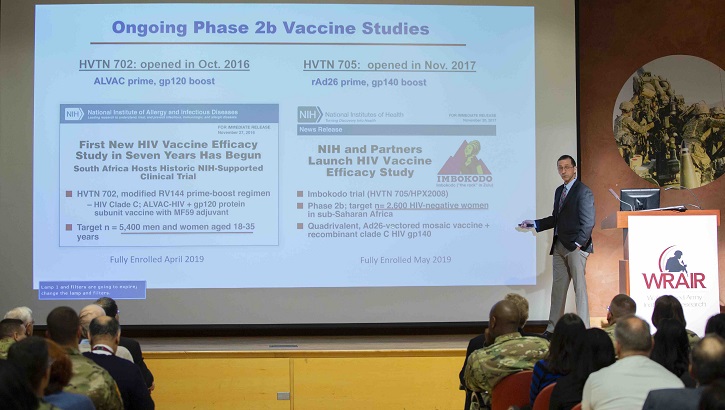
Vaccine study shows infection risk lowered by 31 percent, offering hope for future
MSMR Vol. 26 No. 12 - December 2019
Report
12/1/2019
A monthly publication of the Armed Forces Health Surveillance Branch. This issue of the peer-reviewed journal contains the following articles: Editorial: Mitigating the risk of disease from tick-borne encephalitis in U.S. military populations; Tick-borne encephalitis surveillance in U.S. military service members and beneficiaries, 2006–2018; Case report: Tick-borne encephalitis virus infection in beneficiaries of the U.S. military healthcare system in southern Germany; Update: Cold weather injuries, active and reserve components, U.S. Armed Forces, July 2014–June 2019
Antibiotic resistance a serious threat that's growing, CDC warns
Article
11/15/2019

Newly published paper outlines issue, offers possible solutions
USNS Comfort strengthens partnership with Jamaica
Article
11/7/2019
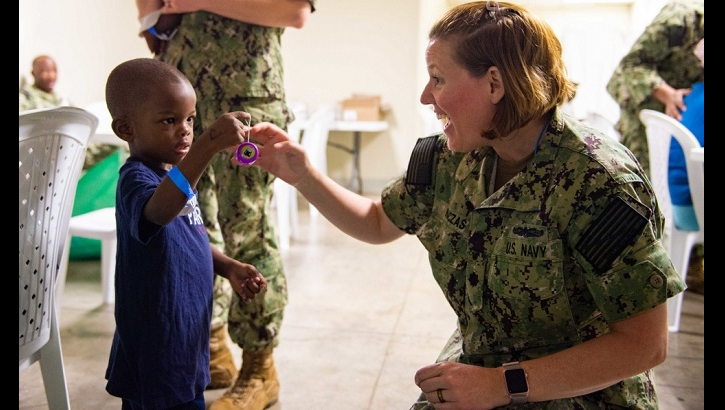
This marks the Comfort’s third visit to Jamaica
MSMR Vol. 26 No. 11 - November 2019
Report
11/1/2019
A monthly publication of the Armed Forces Health Surveillance Branch. This issue of the peer-reviewed journal contains the following articles: Editorial: Mitigating the risk of disease from tick-borne encephalitis in U.S. military populations; Tick-borne encephalitis surveillance in U.S. military service members and beneficiaries, 2006–2018; Case report: Tick-borne encephalitis virus infection in beneficiaries of the U.S. military healthcare system in southern Germany; Update: Cold weather injuries, active and reserve components, U.S. Armed Forces, July 2014–June 2019
Honduran MEDRETEs provide invaluable surgical, training opportunities
Article
10/30/2019
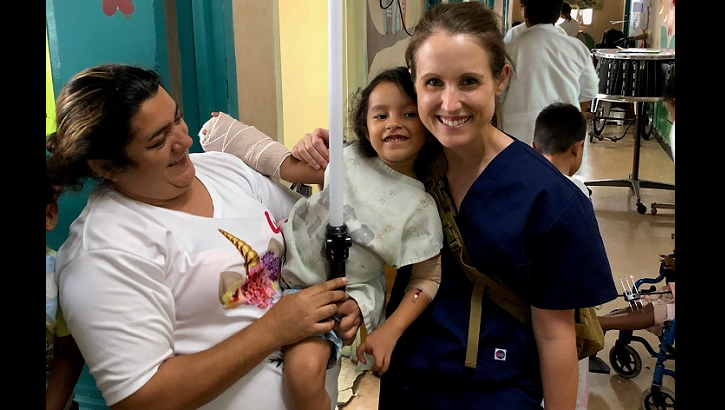
MEDRETEs play a critical role in the training and readiness of military medical personnel
Comfort strengthens partnership following successful medical mission
Article
10/21/2019
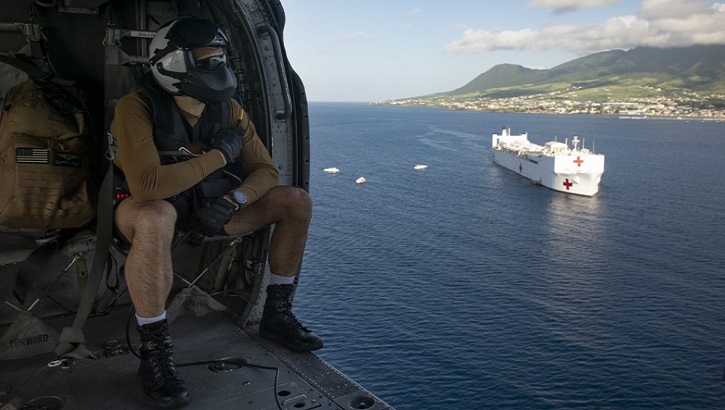
More than 800 medical professionals provided care for 3,677 patients
Military exchanges extinguish vape sales
Article
10/18/2019

The long-term effects of vaping are unknown and not understood
MSMR Vol. 26 No. 10 - October 2019
Report
10/1/2019
A monthly publication of the Armed Forces Health Surveillance Branch. This issue of the peer-reviewed journal contains the following articles: Editorial: The Department of Defense/Veterans Affairs Vision Center of Excellence; Absolute and relative morbidity burdens attributable to ocular and vision-related conditions, active component, U.S. Armed Forces, 2018; Incidence and temporal presentation of visual dysfunction following diagnosis of traumatic brain injury, active component, U.S. Armed Forces, 2006–2017; Incidence and prevalence of selected refractive errors, active component, U.S. Armed Forces, 2001–2018; Incident and recurrent cases of central serous chorioretinopathy, active component, U.S. Armed Forces, 2001–2018





















.png)









No hay comentarios:
Publicar un comentario